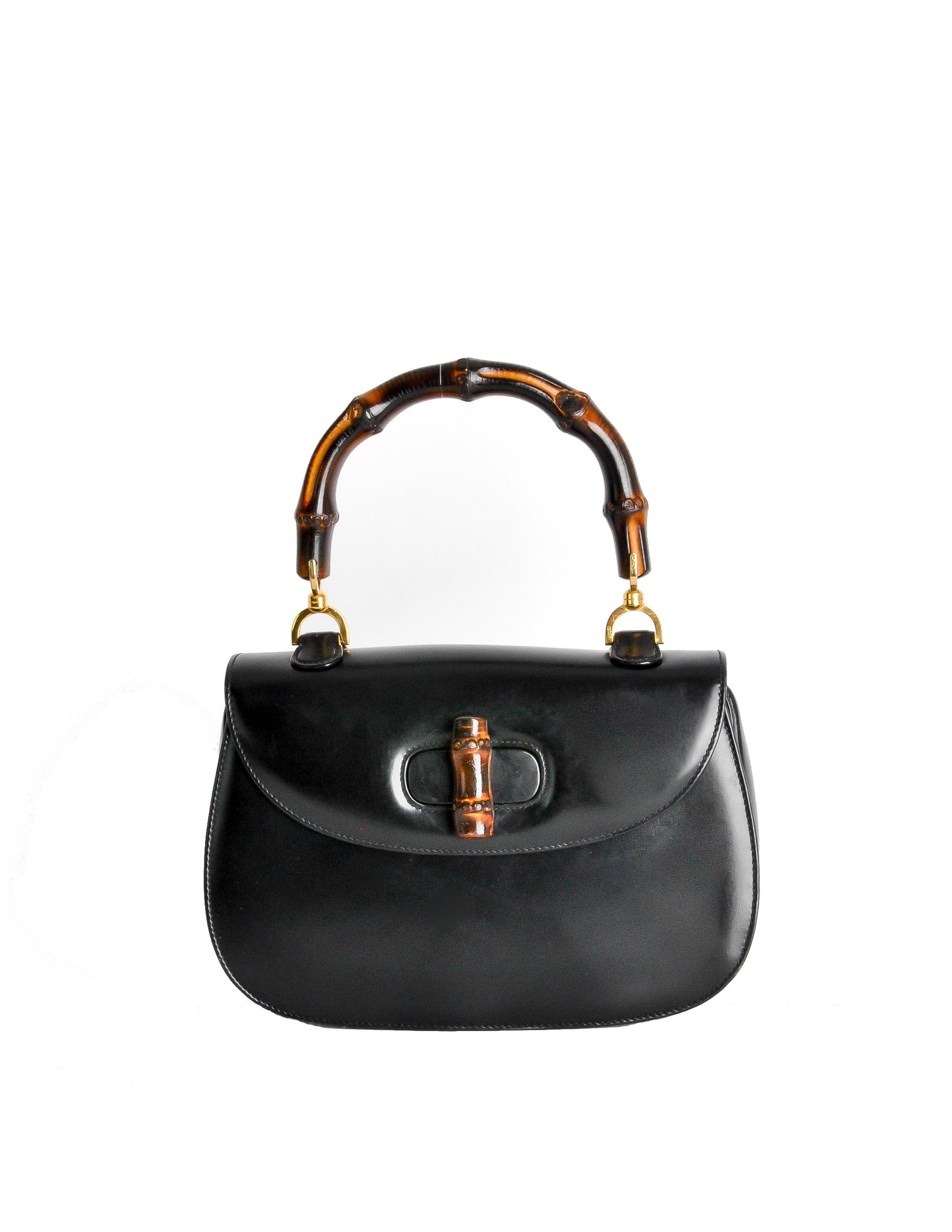Gucci And Bamboo: An Examination Of Sustainable Practices In Fashion

Table of Contents
Gucci's Historical Use of Bamboo
The Iconic Bamboo Handle Bag
The story of "Gucci and Bamboo" is inextricably linked to the brand's iconic bamboo handbag. Born from necessity during World War II, when traditional materials were scarce, this bag represented an innovative and surprisingly sustainable design choice for its time.
- Materials Used: Initially crafted from readily available bamboo, combined with leather accents.
- Production Methods: The bamboo was carefully selected, shaped using heat and pressure, and then meticulously assembled.
- Impact on Brand Image: This resourceful design became a symbol of Gucci's ingenuity and enduring quality, contributing significantly to the brand's prestigious image.
The bamboo handbag's enduring popularity transcends fleeting trends; it remains a coveted piece, a testament to its timeless design and the sustainable ethos inadvertently embedded within its creation. Its continued presence in Gucci's collections underscores the lasting legacy of this material within the brand's identity.
Beyond the Handbag: Other Bamboo Applications
While the bamboo handbag remains the most prominent example, Gucci's exploration of bamboo extended beyond this single iconic piece. While the extent of these other applications may be less widely known, they offer further insight into the brand's historical approach to sustainable materials.
- Examples of Products: Although less prevalent, bamboo was incorporated into other accessories and even some clothing items, demonstrating a broader, albeit limited, commitment to utilizing eco-friendly alternatives.
- Innovative Design Solutions: The use of bamboo often highlighted Gucci's capacity for innovative design, transforming a natural material into sophisticated luxury goods.
- Rationale Behind Use: The rationale behind using bamboo likely stemmed from a combination of necessity (during wartime shortages), a desire for unique materials, and an early, perhaps nascent, awareness of its environmentally friendly properties.
Gucci's Current Sustainability Initiatives
Sustainable Sourcing and Production
Gucci's current sustainability efforts regarding bamboo are less transparent than the historical narrative suggests. While the brand actively promotes its commitment to sustainability, detailed information about its bamboo sourcing and production processes remains limited.
- Traceability Initiatives: Gucci needs to be more transparent about tracing the origins of its bamboo, ensuring responsible forestry practices are employed.
- Partnerships with Sustainable Suppliers: Collaborations with certified suppliers committed to sustainable bamboo cultivation are crucial for ensuring ethical and environmentally sound sourcing.
- Efforts to Minimize Waste: Minimizing waste throughout the production process, from sourcing to manufacturing, is vital for reducing the environmental impact of bamboo utilization.
While Gucci has joined various sustainability initiatives, independent verification of their claims regarding bamboo is still needed to fully assess their impact.
Beyond Bamboo: A Broader Look at Gucci's Sustainability Strategy
Gucci's sustainability strategy extends beyond just bamboo, encompassing broader commitments to circularity, recycled materials, and carbon footprint reduction.
- Circular Economy Initiatives: Initiatives promoting the reuse, repair, and recycling of products are essential for reducing the industry's environmental burden.
- Use of Recycled Materials: Gucci's incorporation of recycled materials in various products demonstrates a step toward minimizing its reliance on virgin resources.
- Carbon Footprint Reduction Targets: Setting and meeting ambitious carbon footprint reduction targets are vital for aligning with the urgency of climate action.
However, despite these efforts, Gucci has also faced criticisms and controversies concerning its sustainability claims, highlighting the need for greater transparency and accountability in reporting.
Challenges and Opportunities in Sustainable Bamboo Production
Environmental Concerns Related to Bamboo Cultivation
While bamboo is often hailed as a sustainable material, its cultivation isn't without potential environmental concerns.
- Sustainable Forestry Practices: Unsustainable harvesting practices can lead to deforestation and biodiversity loss. Certification schemes, such as the Forest Stewardship Council (FSC), are crucial for ensuring responsible sourcing.
- Water Usage: Bamboo cultivation can require significant water resources, especially in arid or semi-arid regions.
- Pesticide Use: The use of pesticides in bamboo farming can negatively impact ecosystems and human health.
Addressing these concerns through responsible farming practices and stringent certifications is vital for realizing the full potential of bamboo as a sustainable material.
Innovation and Future Potential of Bamboo in Fashion
The future of bamboo in fashion lies in innovation and technological advancements.
- New Materials Derived from Bamboo: Research into developing new materials derived from bamboo, such as bamboo fibers for textiles, offers exciting possibilities for sustainable fashion.
- Bio-Based Alternatives: Exploring bio-based alternatives to traditional chemicals used in bamboo processing can minimize environmental impact.
- Potential for Scalability and Mass Production: Developing efficient and scalable production methods is essential for making bamboo-based fashion more widely accessible.
By embracing innovation and responsible practices, the fashion industry can unlock the immense potential of bamboo as a truly sustainable material.
Conclusion
Gucci's relationship with bamboo, from its iconic handbag to its current sustainability initiatives, provides a complex case study in sustainable fashion. While the historical use of bamboo demonstrates ingenuity and a degree of forward-thinking, the brand's current practices require greater transparency and verifiable commitment to responsible sourcing and production. The success of "Gucci and Bamboo," and indeed the broader adoption of sustainable materials in luxury fashion, hinges on addressing the environmental concerns associated with bamboo cultivation and promoting innovation in its application. Before purchasing luxury items, consumers should critically evaluate brands' sustainability claims and support those actively working towards ethical and environmentally responsible practices. Explore alternative brands committed to utilizing sustainable materials like bamboo, demanding greater transparency and accountability from the industry as a whole.

Featured Posts
-
 Canadas Liberals Reject Leadership Review Rules For Mark Carney
May 27, 2025
Canadas Liberals Reject Leadership Review Rules For Mark Carney
May 27, 2025 -
 Kai Cenats Met Gala Rejection His Reason Explained
May 27, 2025
Kai Cenats Met Gala Rejection His Reason Explained
May 27, 2025 -
 Analyzing Kai Cenats Best And Most Expressive Facial Moments
May 27, 2025
Analyzing Kai Cenats Best And Most Expressive Facial Moments
May 27, 2025 -
 Manchester Uniteds Pursuit Of Victor Osimhen A Transfer Analysis
May 27, 2025
Manchester Uniteds Pursuit Of Victor Osimhen A Transfer Analysis
May 27, 2025 -
 Couples Outing Ashton Kutcher And Mila Kunis In Beverly Hills Post Venice Shoot
May 27, 2025
Couples Outing Ashton Kutcher And Mila Kunis In Beverly Hills Post Venice Shoot
May 27, 2025
